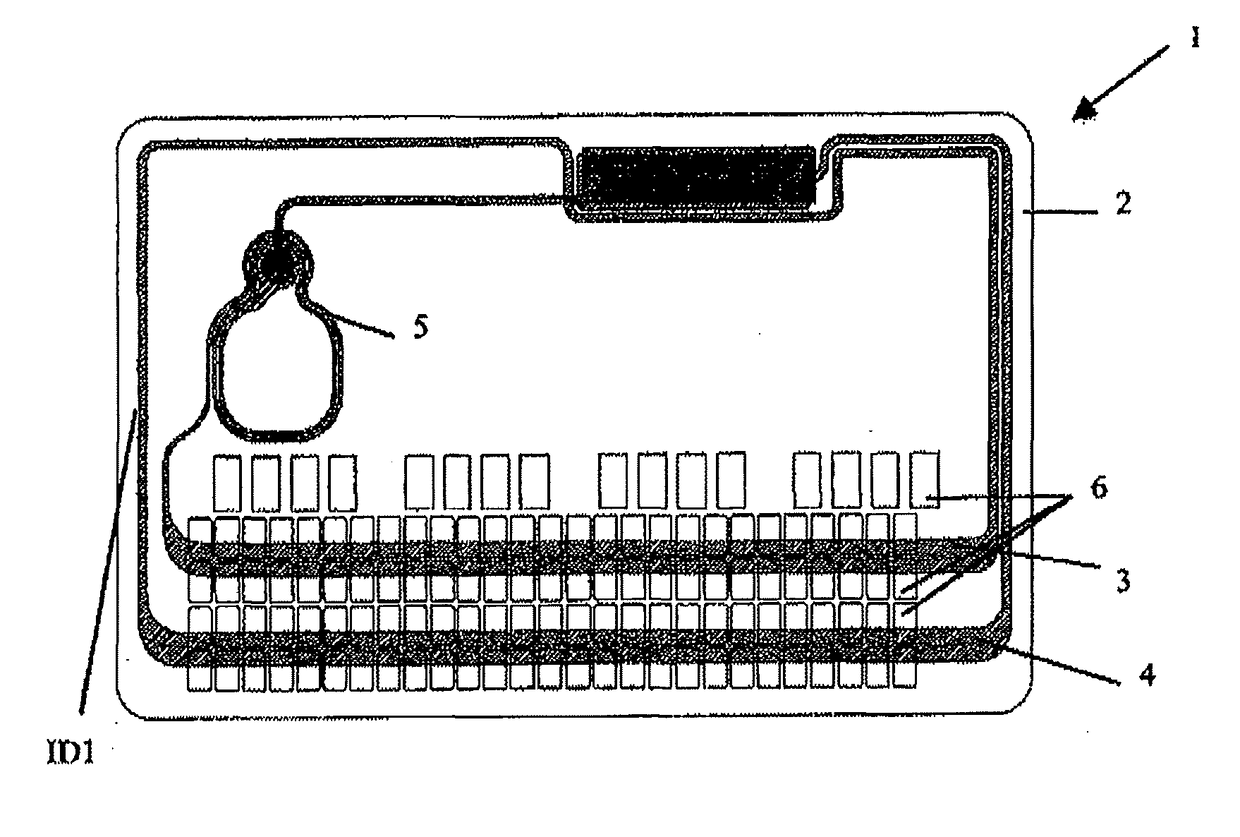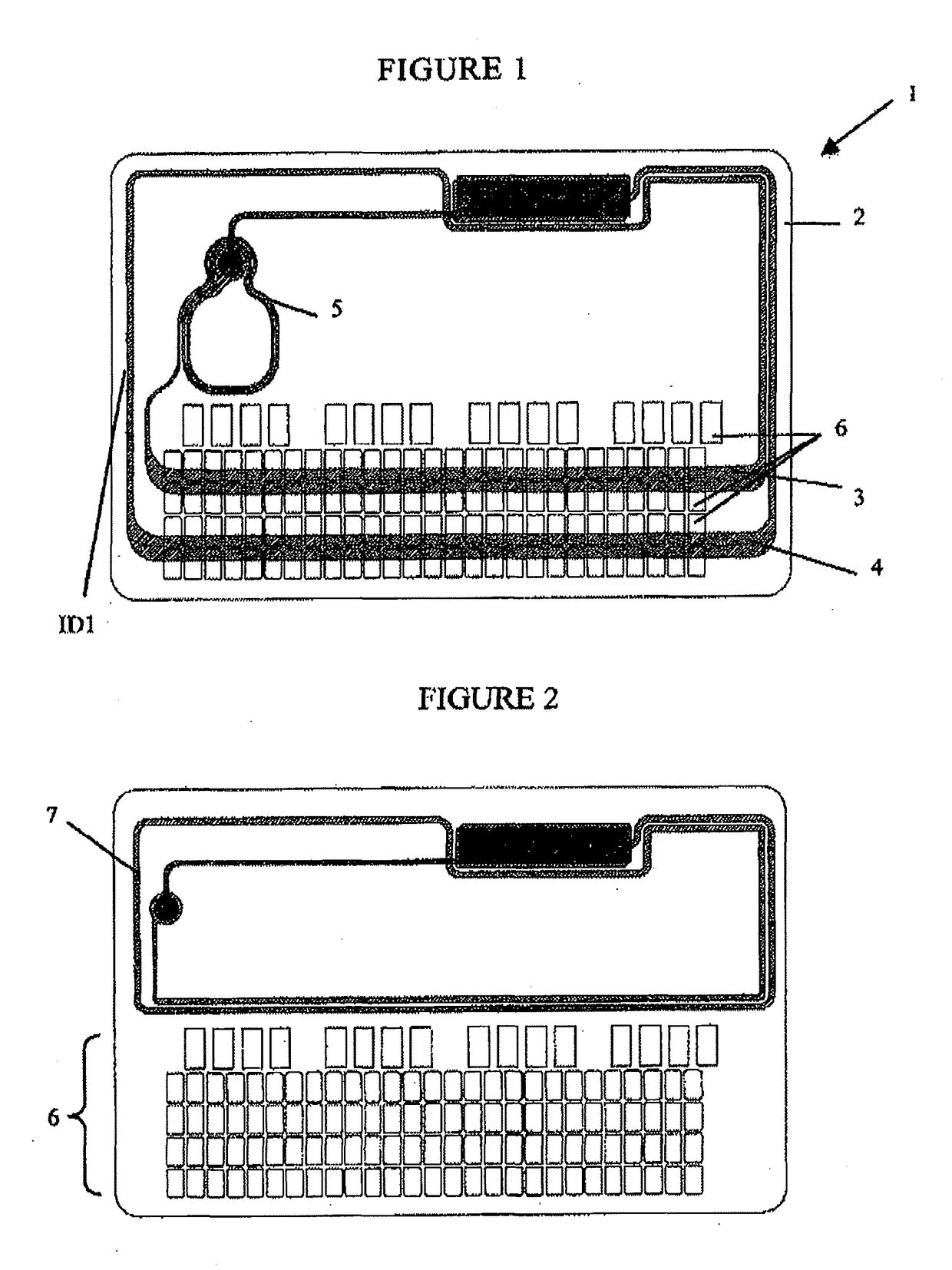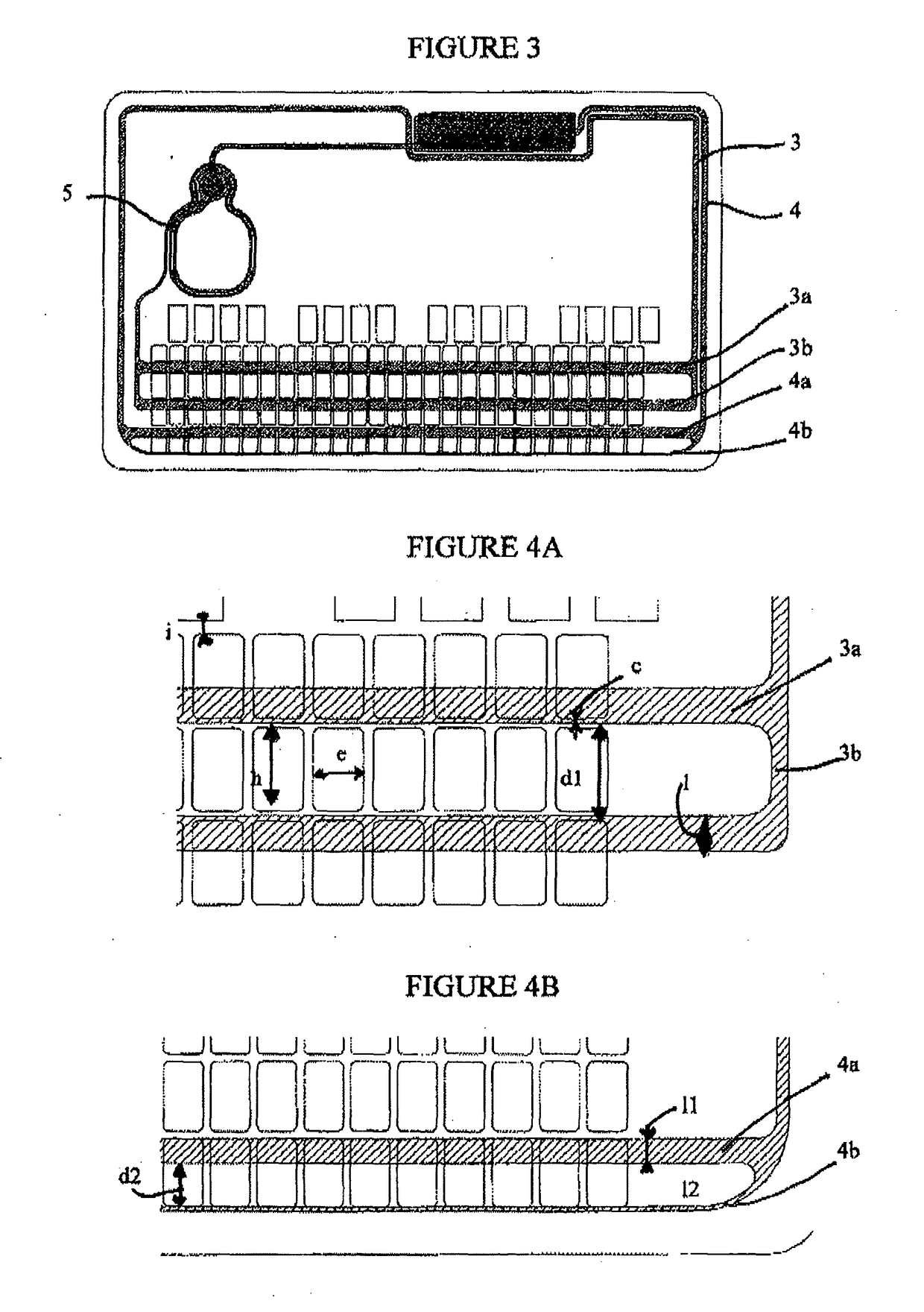Contactless smart card comprising an antenna optimized to allow embossing of characters
a technology antennas, which is applied in the field of contactless smart cards comprising antennas optimized to allow embossing of characters, can solve problems such as damage or even cutting antenna tracks, degrading the cohesion of layers, and complicated problems
- Summary
- Abstract
- Description
- Claims
- Application Information
AI Technical Summary
Benefits of technology
Problems solved by technology
Method used
Image
Examples
Embodiment Construction
[0034]Turn to FIG. 1. The known smart card 1, shown in plan view, includes a card body 2 including an antenna ID1, termed the main antenna, consisting of two turns of large size, and a secondary antenna or concentrator 5 intended to concentrate the electromagnetic flux. The turns of the antenna ID1 (simply denoted ID1 in FIG. 1), namely the turns of large size that run along the card edges and therefore have a format close to the ID1 format, overlap the area of the card body intended to receive the lines 6 of alphanumeric characters. The locations of the characters to be embossed are represented by rectangles and the characters themselves are not shown and vary from one card to another.
[0035]Given the tolerance T of approximately 1.5 mm for positioning the antenna ID1 in the card body, the horizontal sections of the turns of the antenna ID1 can be at positions varying from one card to another. In particular, the tracks 3, 4 of the antenna ID1 can be superimposed on a line 6 of chara...
PUM
 Login to View More
Login to View More Abstract
Description
Claims
Application Information
 Login to View More
Login to View More - R&D
- Intellectual Property
- Life Sciences
- Materials
- Tech Scout
- Unparalleled Data Quality
- Higher Quality Content
- 60% Fewer Hallucinations
Browse by: Latest US Patents, China's latest patents, Technical Efficacy Thesaurus, Application Domain, Technology Topic, Popular Technical Reports.
© 2025 PatSnap. All rights reserved.Legal|Privacy policy|Modern Slavery Act Transparency Statement|Sitemap|About US| Contact US: help@patsnap.com



